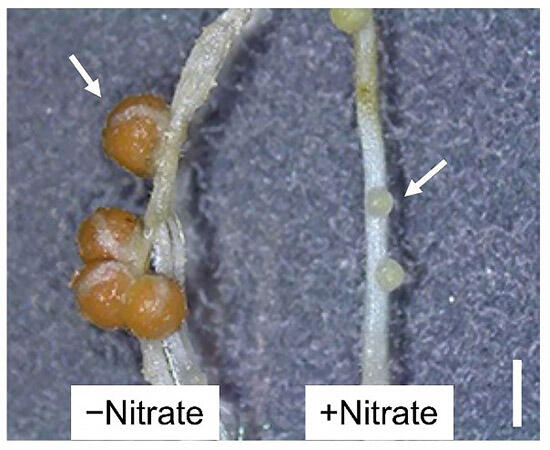Using Lotus japonicus, a model plant in the legume family, research groups at the University of Tsukuba, the National Institute for Basic Biology, and the Japan Science and Technology Agency found that the two proteins (NLP transcription factors) NRSYM1 and NRSYM2, which bind to specific DNA formulations and regulate gene expression, are the primary factors that control gene expression as a response to concentrations of nitric acid.
Legumes cease to coexist with rhizobia (root nodule bacteria) in soils that are rich in nitrogen nutrients, and this is because they possess a mechanism to suppress the formation of root nodules according to the state of nitrogen nutrients in the soil. Through this mechanism, legumes can adapt to their nitrogen nutritional environment, but until now, most of this mechanism had not yet been clarified.
The research groups investigated the involvement of the NRSYM1 and NRSYM2 transcription factors in nitric-acid induced genes whose expression changed depending on the concentration of nitric acid in the soil. As a result, they clarified that these two proteins act as key transcription factors for nitric-acid induced gene expression. Additionally, they also determined that many of the target genes for the transcription factor called NIN, which works to create root nodules, are regulated by the actions of NRSYM1 and NRSYM2. Furthermore, the research groups also newly suggested that, under nitric-acid rich conditions, the expression of the NIN transcription factor's target genes may be suppressed via an interaction between the NRSYM1 and NIN transcription factors.
These results deepened understanding of the basic mechanisms for transcription factor-mediated regulation of gene expression in plants, as well as providing insight into answering the question of "How do plants stop root nodule symbiosis in environments rich in nitrogen nutrients?" Associate Professor Takuya Suzaki of the University of Tsukuba Faculty of Life and Environmental Sciences said that "We have proposed a model that successfully explains the regulatory relationship between nitrogen nutrients, gene expression, and root nodule formation. Going forward, we want to deepen our understanding of the mechanism we discovered in order to understand the skillful environmental adaptation strategies of plants, which cannot move to a new environment."

Credit: Tsukuba University.
This article has been translated by JST with permission from The Science News Ltd.(https://sci-news.co.jp/). Unauthorized reproduction of the article and photographs is prohibited.




